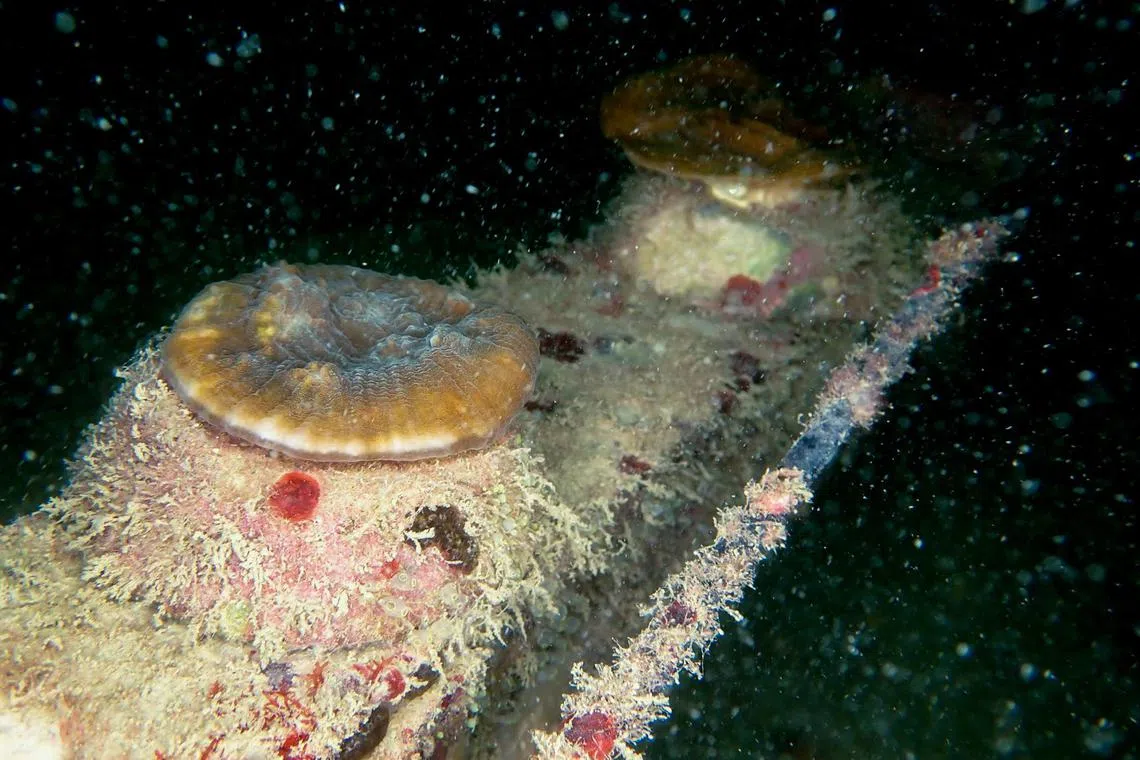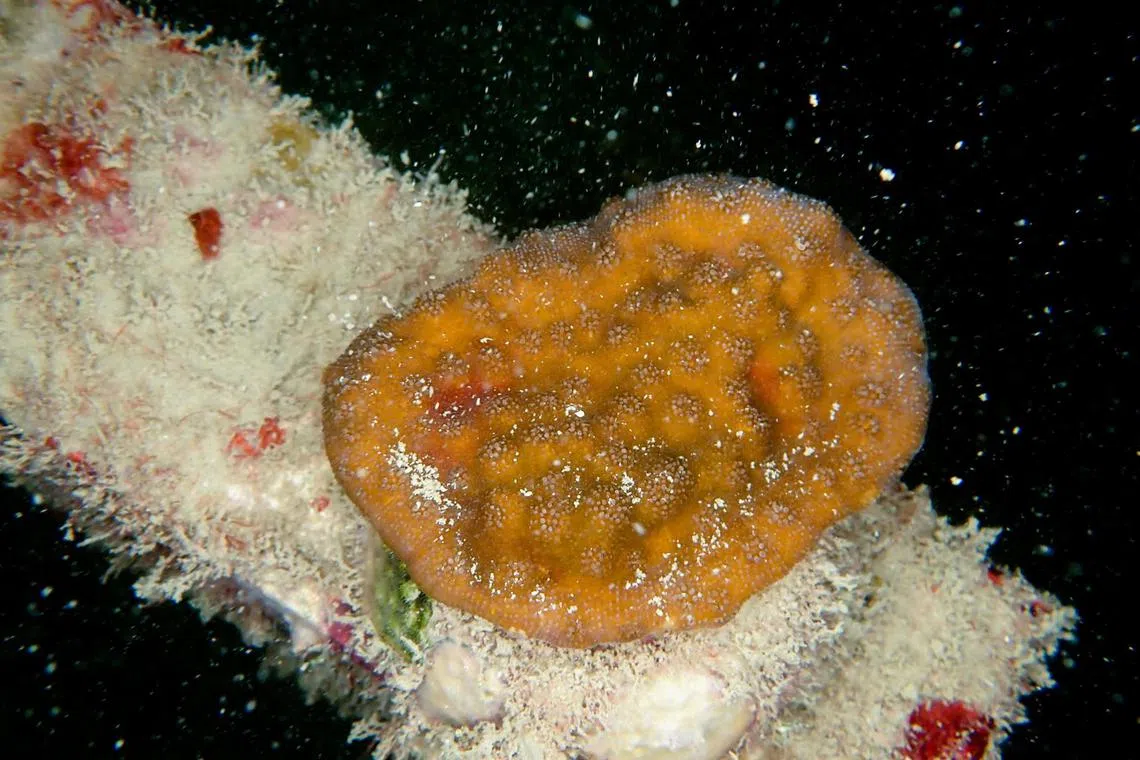WWF-Singapore, NUS to pilot coral restoration in deeper waters in Southern Islands
Sign up now: Get ST's newsletters delivered to your inbox

For the pilot, the corals are first grown in nursery tanks under low-light conditions before being transplanted to light-limited reef zones in the Southern Islands.
PHOTO: WWF-SINGAPORE
Follow topic:
SINGAPORE - A project is under way to move coral restoration to deeper waters in the Southern Islands.
The project is a partnership between the World Wide Fund for Nature Singapore (WWF-Singapore) and the National University of Singapore’s (NUS) Tropical Marine Science Institute (TMSI), together with National Parks Board (NParks).
Scientists involved in the project are seeking to understand how to restore corals in deeper reefs of around 6m to 8m in Singapore waters.
TMSI senior research fellow Jani Tanzil said: “The scientific outcomes from this research project will also hopefully contribute to the upcoming national effort to plant 100,000 corals that will kick-start natural recovery.
“Within the marine park in the waters off the Southern Islands, there are a lot of areas in the deeper zone that are degraded areas. We just need to plan a lot better.”
She added: “Around the Southern Islands, where most of our remaining reefs are concentrated, we have lost a lot of corals at depths beyond 6m to 7m. Live coral cover at these deeper depths have dropped from up to 45 per cent in the 1980s, to less than 5 to 16 per cent today, with no recovery to historical levels.
“Although restoring corals at this zone can be challenging, our research shows that it is possible. We just need to plan a lot more.”
For the pilot, the corals are first grown in nursery tanks under low-light conditions at St John’s Island National Marine Laboratory. Once they grow to a suitable size of 3cm to 5cm, they are transplanted to light-limited reef zones found in the Southern Islands.
Since February, about 160 corals have been transplanted in the waters off Kusu island. Another 200 are located in Bendera Bay, an artificial lagoon managed by NParks.
So far, seven hard coral species with higher chances of surviving in low-light conditions have been selected.
One reason for choosing hard corals is that they can produce calcium carbonate skeletons that form the backbone of coral reef ecosystems, which provide shelter and habitat for other forms of sea life.
“We hope that the coral restoration will kick-start natural recovery,” said Dr Jani.

About 160 corals have been transplanted in the waters off Kusu island since February.
PHOTO: WWF-SINGAPORE
Ms Gwendolyn Chow, WWF-Singapore’s senior programme executive of field and science (ocean), said research from the project can be applied to WWF projects in other parts of the world.
“A lot of coastal communities are becoming more urbanised, and that is going to create more built-up areas and change the environmental conditions to look a bit more like Singapore’s,” she said.
But restoration of coral reefs, which would take decades, should be a last conservation resort, said Dr Jani, suggesting that it is more important to spur rejuvenation, where the quality of water can be improved so that an ecosystem can naturally recover.
The top priority should always be to support key areas that can retain important ecosystems. “Because at the end of the day, that’s going to be the cheapest solution as well,” she said.

